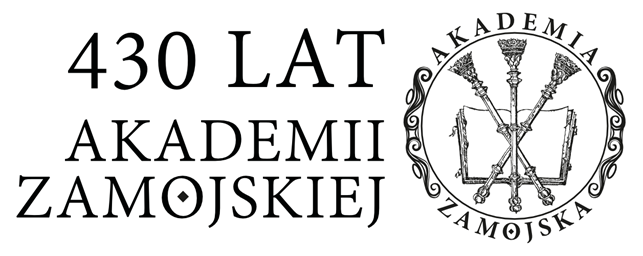Chaffin, R., and D.J. Hermann. 1988. “The Nature of Semantic Relations. A Comparison of Two Approaches.” In Relational Models of the Lexicon. Representing Knowledge in Semantic Networks, edited by M.W. Evens, 289–334. Cambridge England; New York: Cambridge University Press.
Cios, K.J., W. Pedrycz, R.W. Swiniarski, and L. Kurgan. 2007. Data Mining. A Knowledge Discovery Approach. New York: Springer.
Greco, S., B. Matarazzo, and R. Slowiński. 2001. “Rough Sets Theory for Multicriteria Decision Analysis.” European Journal of Operational Research no. 129 (1): 1–47. doi: 10.1016/S0377-2217 (00)00167-3.
DOI: https://doi.org/10.1016/S0377-2217(00)00167-3
Han, J.W., Y.D. Cai, and N. Cercone. 1992. “Knowledge Discovery in Databases — an Attribute-Oriented Approach.” Very Large Data Bases: VLDB – 92:547–559.
Ishizu, S., A. Gehrmann, Y. Nagai, and Y. Inukai. 2007. “Rough Ontology. Extension of Ontologies by Rough Sets.” Human Interface and the Management of Information: Methods, Techniques and Tools in Information Design, LNCS Proceedings no. 4557:456–462.
DOI: https://doi.org/10.1007/978-3-540-73345-4_52
Kohler, J., S. Philippi, M. Specht, and A. Ruegg. 2006. “Ontology Based Text Indexing and Querying for the Semantic Web.” Knowledge-Based Systems no. 19 (8): 744–754. doi: 10.1016/j.knosys.2006.04.015.
DOI: https://doi.org/10.1016/j.knosys.2006.04.015
Kudoh, Y., M. Haraguchi, and Y. Okubo. 2003. “Data Abstractions for Decision Tree Induction.” Theoretical Computer Science no. 292 (2): 387–416. doi: 10.1016/S0304-3975(02)00178–0.
DOI: https://doi.org/10.1016/S0304-3975(02)00178-0
Lukaszewski, T., J. Józefowska, and A. Lawrynowicz. 2012. “Attribute Value Ontology — Using Semantics in Data Mining.” In ICEIS 2012 — Proceedings of the 14th International Conference on Enterprise Information Systems, Volume 2, Wroclaw, Poland, 28 June – 1 July, 2012, edited by L.A. Maciaszek, A. Cuzzocrea and J. Cordeiro, 329–334. Wrocław, Poland: SciTePress.
Łukaszewski, T., J. Józefowska, A. Ławrynowicz, and Ł. Józefowski. 2011. “Handling the Description Noise Using an Attribute Value Ontology.” Control and Cybernetics no. 40 (2): 275–292.
Midelfart, H., and J. Komorowski. 2002. “A Rough Set Framework for Learning in a Directed Acyclic Graph.” Rough Sets and Current Trends in Computing, Proceedings no. 2475:144–155.
DOI: https://doi.org/10.1007/3-540-45813-1_18
Milstead, J.L. 2001. “Standards for Relationships Between Subject Indexing Terms.” In Relationships in the Organization of Knowledge, edited by C.A. Bean and R. Green, 53–66. Dordrecht-Boston-Norwell, MA: Kluwer Academic Publishers.
DOI: https://doi.org/10.1007/978-94-015-9696-1_4
Mitchell, T.M. 1982. “Generalization as Search.” Artificial Intelligence no. 18 (2): 203–226. doi: 10.1016/0004-3702(82)90040–6.
DOI: https://doi.org/10.1016/0004-3702(82)90040-6
Mitchell, T.M. 1997. Machine Learning, McGraw-Hill series in computer science. New York: McGraw-Hill.
Neches, R., R. Fikes, T. Finin, T. Gruber, R. Patil, T. Senator, and W.R. Swartout. 1991. “Enabling Technology for Knowledge Sharing.” AI Magazine no. 12 (3): 36–56.
Nunez, M. 1991. “The Use of Background Knowledge in Decision Tree Induction.” Machine Learning no. 6 (3): 231–250. doi: 10.1007/Bf00114778.
DOI: https://doi.org/10.1007/BF00114778
Pancerz, K. 2012a. “Dominance-Based Rough Set Approach for Decision Systems over Ontological Graphs.” In Proceedings of the Federated Conference on Computer Science and Information Systems, September 9–12, 2011. Wrocław, Poland, edited by M. Ganzha, L. Maciaszek and P. M., 323–330. Wrocław: Polskie Towarzystwo Informatyczne; IEEE Computer Society Press.
Pancerz, K. 2012b. “Toward Information Systems over Ontological Graphs.” In Rough Sets and Current Trends in Computing, edited by J. Yao, Y. Yang, R. Słowiński, S. Greco, H. Li, S. Mitra and L. Polkowski, 243–248. Berlin: Springer Berlin Heidelberg.
DOI: https://doi.org/10.1007/978-3-642-32115-3_29
Pancerz, K. 2013a. “Decision Rules in Simple Decision Systems over Ontological Graphs.” In Proceedings of the 8th International Conference on Computer Recognition Systems CORES 2013, edited by R. Burduk, K. Jackowski, M. Kurzyński, M. Woźniak and A. Żołnierek, 111–120. Cham-Heidelberg-New York-Dordrecht-London: Springer International Publishing.
DOI: https://doi.org/10.1007/978-3-319-00969-8_11
Pancerz, K. 2013b. “Semantic Relationships and Approximations of Sets: An Ontological Graph Based Approach.” In 6th International Conference on Human System Interactions (HSI). June 06–08, 2013. Gdańsk, Sopot, Poland, edited by W.A. Paja and B.M. Wilamowski, 62–69. Gdańsk: IEEE.
DOI: https://doi.org/10.1109/HSI.2013.6577803
Pawlak, Z. 1991. Rough Sets. Theoretical Aspects of Reasoning about Data, Theory and decision library Series D, System theory, knowledge engineering, and problem solving. Dordrecht-Boston: Kluwer Academic Publishers.
Poli, R. 2008. “Analysis of the Publications on the Applications of Particle Swarm Optimisation.” Journal of Artificial Evolution and Applications no. 2008:1–10. doi: 10.1155/2008/685175.
DOI: https://doi.org/10.1155/2008/685175
Poli, R., J. Kennedy, and T. Blackwell. 2007. “Particle Swarm Optimization.” Swarm Intelligence no. 1 (1): 33–57. doi: 1007/s11721-007-0002-0.
DOI: https://doi.org/10.1007/s11721-007-0002-0
Srikant, R., and R. Agrawal. 1997. “Mining Generalized Association Rules.” Future Generation Computer Systems no. 13 (2–3): 161–180. doi: 10.1016/S0167-739x(97)00019-8.
DOI: https://doi.org/10.1016/S0167-739X(97)00019-8
Storey, V.C. 1993. “Understanding Semantic Relationships.” The International Journal on Very Large Data Bases no. 2 (4): 455–488. doi: 10.1007/BF01263048.
DOI: https://doi.org/10.1007/BF01263048
Vapnik, V.N. 1998. Statistical Learning Theory, Adaptive and Learning Systems for Signal Processing, Communications, and Control. New York: Wiley.
Winston, M.E., R. Chaffin, and D. Herrmann. 1987. “A Taxonomy of Part-Whole Relations.” Cognitive Science no. 11 (4): 417–444. doi: 10.1207/s15516709cog1104_2.
DOI: https://doi.org/10.1207/s15516709cog1104_2



 English
English
 Język Polski
Język Polski




